Karsha Monastery is the largest monastery in Zanskar Valley. And it is a beautiful place to visit in Padum. By largest, it does not mean that the monastery has the largest structure. The largest monastery has the greatest number of villages under it. Karsha Gompa is the largest monastery in Zanskar Valley just like Hemis Gompa is in Ladakh area.
It was our penultimate day in Zanskar valley. We had already visited some of the most beautiful and interesting monasteries in Zanskar. Karsha was the last one we visited during this time in Zanskar.

The Zanskar Valley is one of the few regions that still follows the old traditions of Buddhism from the days of Kushanas. Infact, you can see the Kanika Stupa named after King Kaniskha inside the Sani Gompa. The Kanika Stupa is considered to be one of the eight oldest Buddhist sites in the world. Karsha Monastery is also quite an ancient Buddhist monastery in the Zanskar area.
How to reach Karsha?
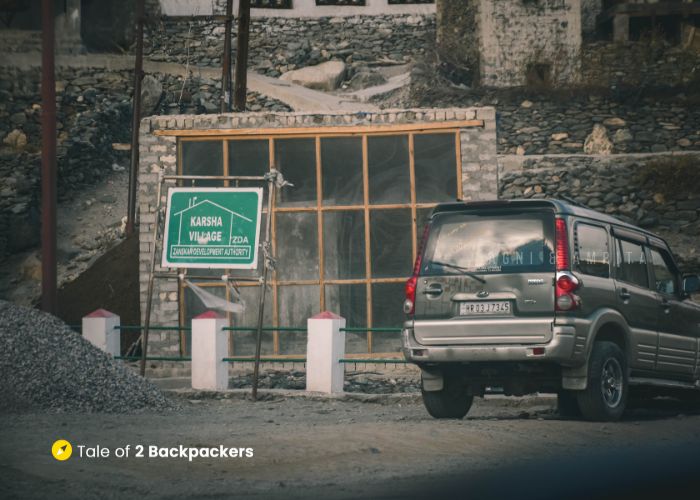
Karsha is located about 7 km from Padum and the monastery is located on a hillock on the top of the village. Karsha is located across the Stod River and to reach the village, you have to cross the bridge over the river at Doda. After crossing the bridge, a nice tarred road takes you through the village to the Karsha Monastery. It takes about half an hour by car to reach Karsha Gompa from Padum town.
Karsha Monastery Trip – Our Experience
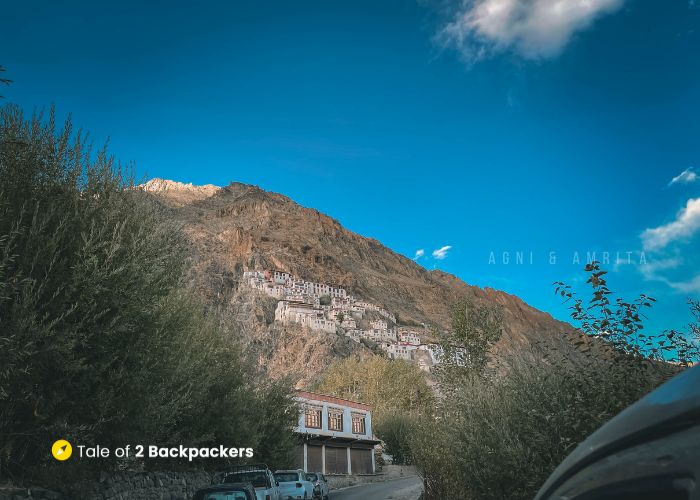
The Karsha village sits at a higher altitude than Padum and seems to cling to a mountain side. As a result, the entire village looks quite pretty from a distance. We had started from Tsazar in the morning and had already visited the Sani Gompa and the Dzongkhul Monastery. Karsha was last in the list of places we intended to visit that day.
We crossed the bridge at Doda and our car climbed steadily up the mountain roads. Driving through the village, we finally came across an arched gateway to enter the monastery. We parked our car at the foot of the monastery compound and took the flight of stone steps leading inside the monastery complex.
Inside the Karsha Monastery
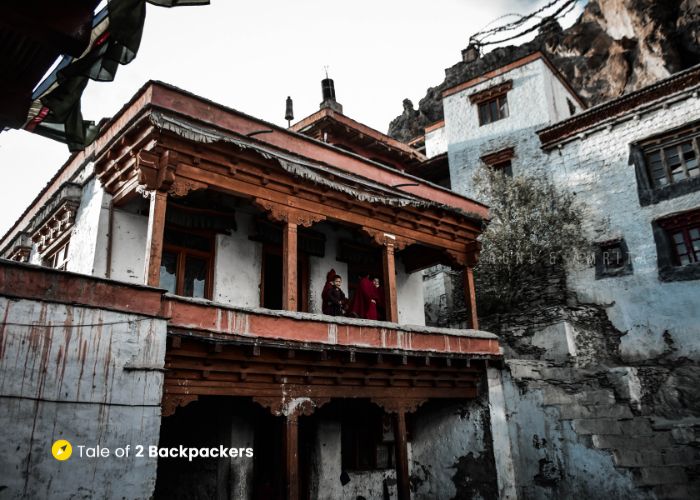
Karsha Gompa was founded in 10th century by Phagspa Sherab and is now under the control of the younger brother of His Holiness Dalai Lama. The monastery looks like an imposing fortress from outside and is the resident of 180 lamas and monks. The monastery belongs to the Gelugpa sect of Buddhism.
Karsha Monastery is one of the major scholastic centres of Buddhist studies. The gompa has many beautiful statues of Buddha, Avalokiteshwara, Tsongkhapa and many ancient and precious murals and thangkas.

Karsha Monastery is also famous for the Gustor festival that is held here in July every year. It is an important event for the Zanskaris and masked dance is performed during the festival.
Playtime for the young monks
It was almost sundown when we reached the monastery complex. We were greeted by squeals of excitement and a cacophony of sounds. As we entered the complex, we also found out the source of that sound – a few young monks were running around the complex in all alacrity and excitement.

There were young monks of various ages. It appeared that their evening classes were over and now they were free to play around before having dinner. There were also a few other young monks running around on the first level.
A few of them came running to us as they saw us clicking pictures. They were quite interested in the DSLR that Agni was carrying with him. We took a few pictures, promised the young ones that we would come back to talk with them and then went to explore the monastery.
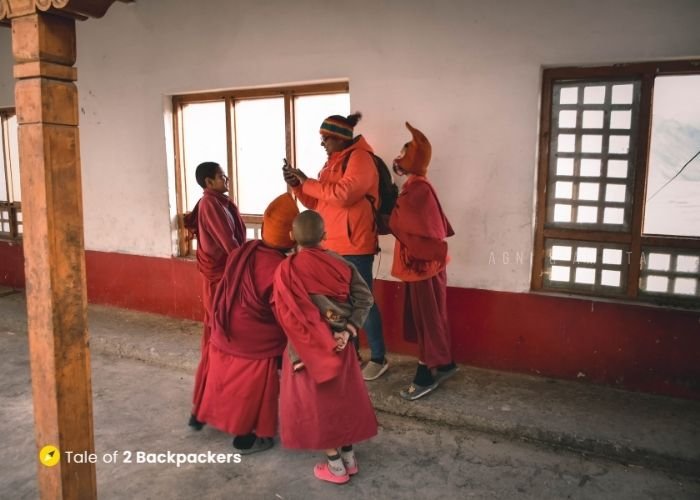
There is a small courtyard inside the monastic complex. On one side there is a huge kitchen while the other side houses a huge chorten. As we looked inside the kitchen, we saw a few monks preparing food in huge utensils. The courtyard had wooden windows. The views of the valleys and the snow-capped Zanskar range looked quite captivating against the reddish-brown window frames.
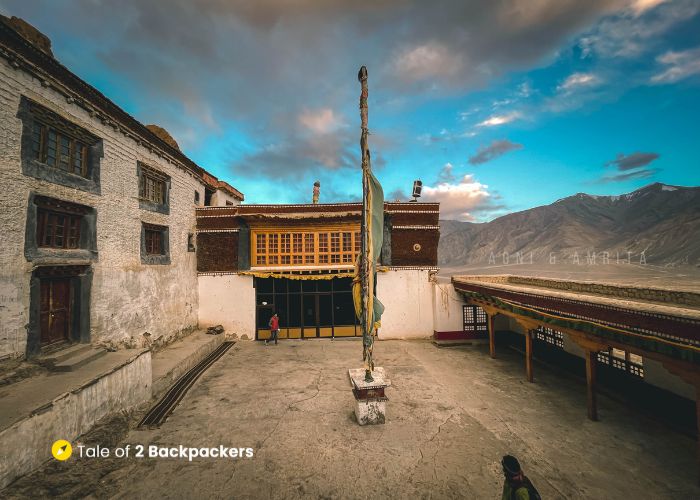
Mummy inside Karsha Monastery
This chorten inside the Karsha Gompa is quite interesting. For it contains the mummified body of Ringchen Zangpo, an incarnate Lama. The mummified body is contained inside a wooden box having a silver lining. You can enter inside the building and view the box. Photography is not allowed inside this chorten.

The next level houses the prayer halls and the temples. We went to the upper level and entered inside the prayer hall. A few lamas were inside chanting prayers. Outside the prayer hall, there is a corridor that leads to a small terrace-like place. And from here, you can get one of the most beautiful views of the Stod Valley.
There is another level that houses the Avalokitesvara Temple. We went upstairs and another monk very kindly opened the temple for us and we went inside to see the beautiful statues and the thangkas. The view from this level is also quite fetching.

We could see the vast expanse of the Doda basin amidst the backdrop of the Zanskar range. The sun was setting down the majestic Zanskari ranges. The clear blue sky was gradually turning into various hues of yellows and oranges. Everything looked insanely gorgeous.
Feelings and More
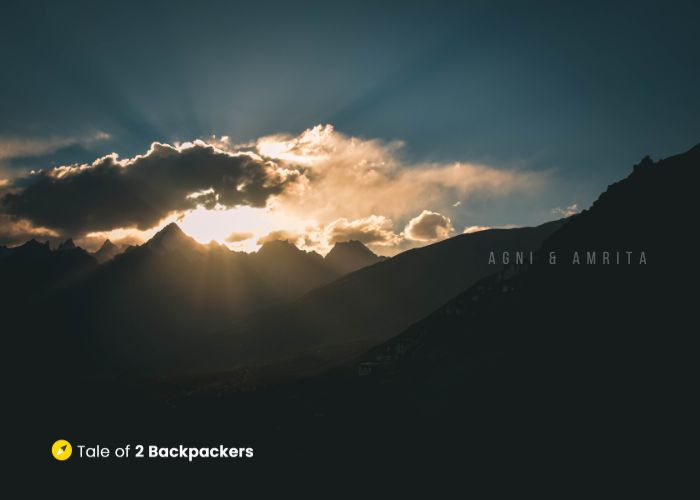
Mesmerized by the surroundings, the beautiful vistas and the peace the place offered, we did not really want to get back to Padum. The chortens along with the fluttering prayer flags, cool breeze and the setting sun created a surreal landscape. It was indeed an out of the world experience!
And then we heard the sound of conch shells. Karsha Monastery has the tradition of blowing conch shells during the lunch and dinner time to inform the lamas to assemble.
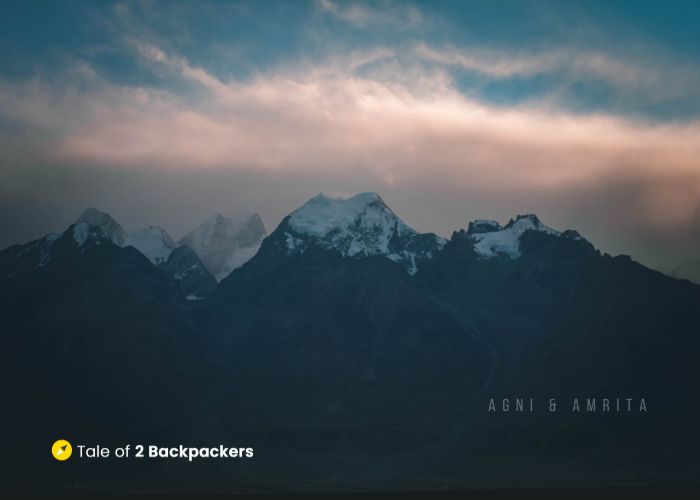
Dinner With the Monks
We went down to the courtyard and found the young lamas already roaming around there. A few had their plates with them. Soon a monk brought out a huge pot full of khichdi. And the young ones stood in a queue and took their food. They went to a side to have their meal.

The monk who was serving saw us standing there and offered us a plate as well. We, being the “oh-so-modest” ones, hesitated. We were hungry for sure, but were also unsure and shy. But the monk simply smiled, went inside the kitchen and brought two plates of khichdi for us as well. And then a couple of young monks came up, took my hands and made me sit with them. We ate with a content smile on our faces while listening to the constant chattering of the young monks.

Dinner with the monks was thus an emotional affair. As it is, we were leaving the place the next day. We had already received so much love and warmth from the people. And finally, the beautiful landscape, serene atmosphere and dinner made me fully appreciate the joys and experiences that only travel can provide.
Goodbyes are Hard
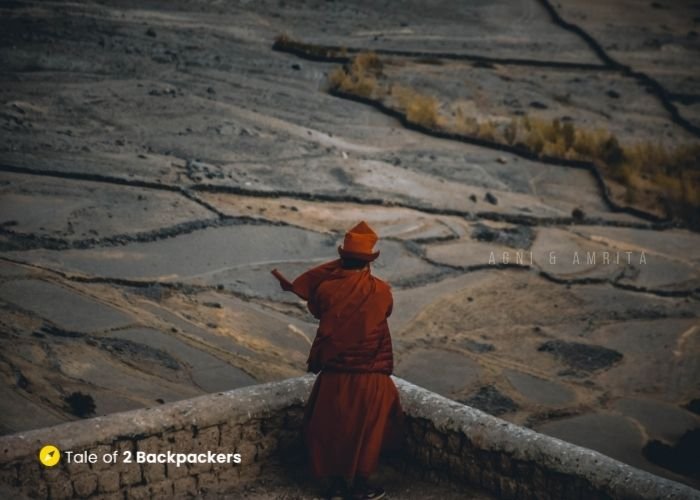
We cleaned the dishes after having our dinner, thanked the monks and then started towards our homestay in Tsazar. This day was quite an eventful day. Even while returning towards Tsazar, we kept on telling each other – wish we had a few more days here!

The next day, we started early from Tsazar and drove through the rugged terrains of Zanskar Valley and reached Rangdum. On the way, we crossed the Drang Drung Glacier, Pensi La Pass, Twin Lakes and the Rangdum Gompa. That was another spectacular journey.
More Resources on Zanskar
- How to plan a Trip to Zanskar Valley – A Complete Travel Guide
- Zanskar Valley – Expectations and Experiences
- How to reach Zanskar Valley – Leh to Padum & Manali to Padum
- Phugtal Monastery Trek – Guide to the Cave Monastery of Zanskar
- Suru Valley – Where, How and When? A Complete Travel Guide
- Zangla Palace, Zanskar – A Beauty in Ruins
- Dzongkhul Monastery – The Most Peaceful Monastery in Zanskar
If you liked this article, please share this with your family, friends and neighbours.
Pin it For a later Read!



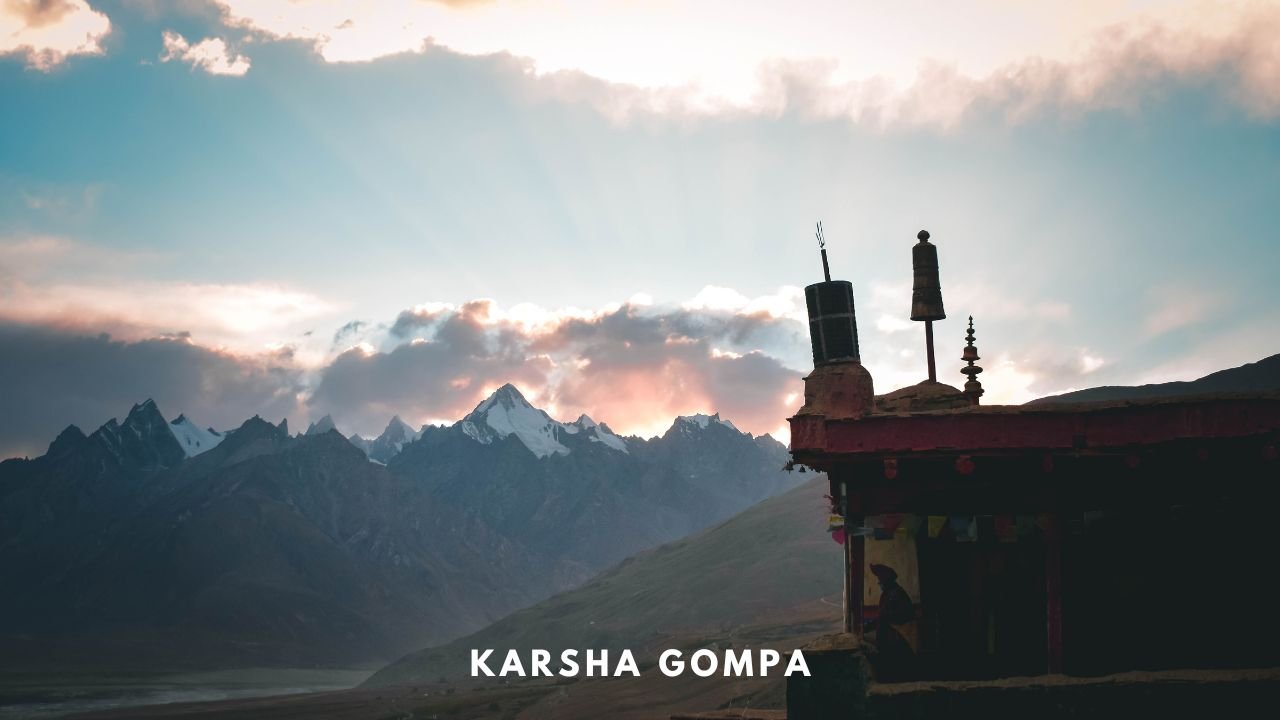

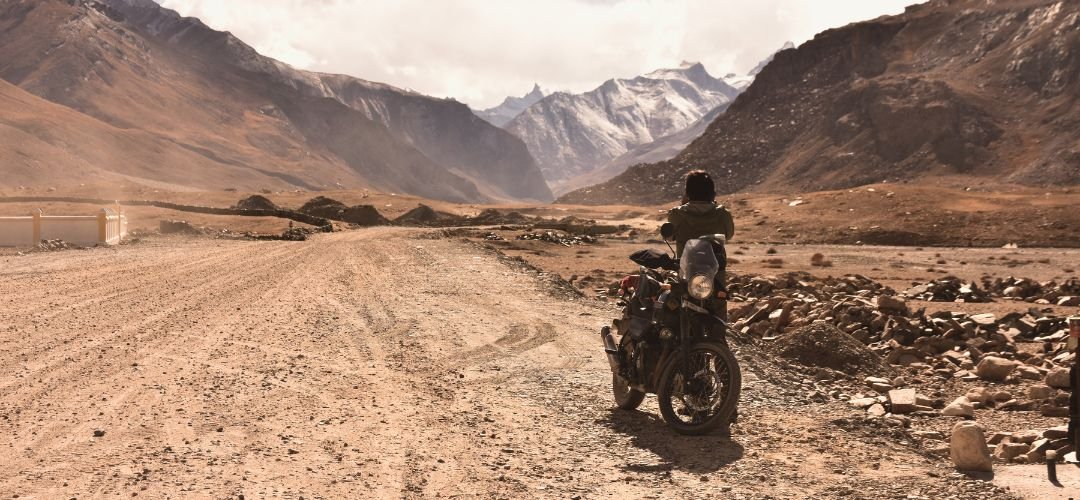
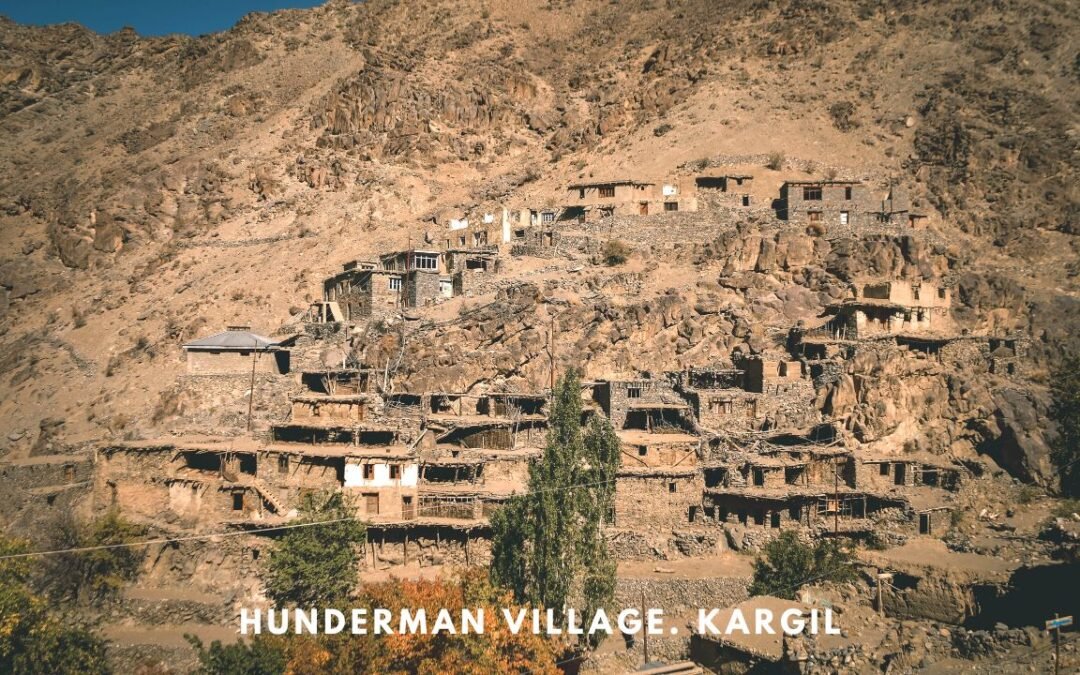
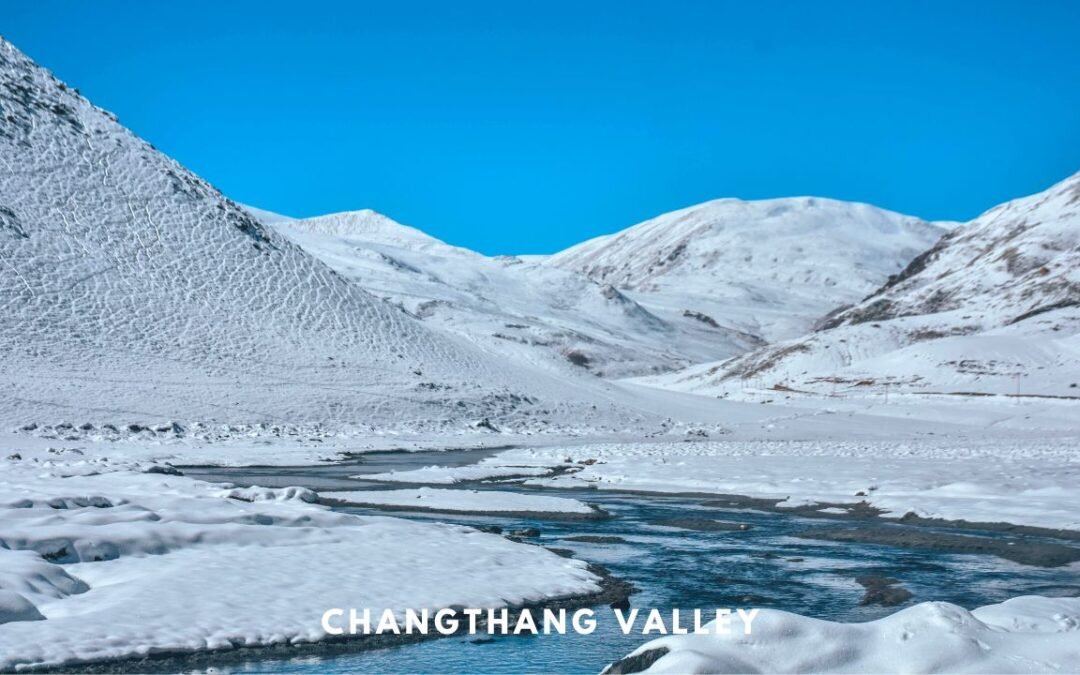
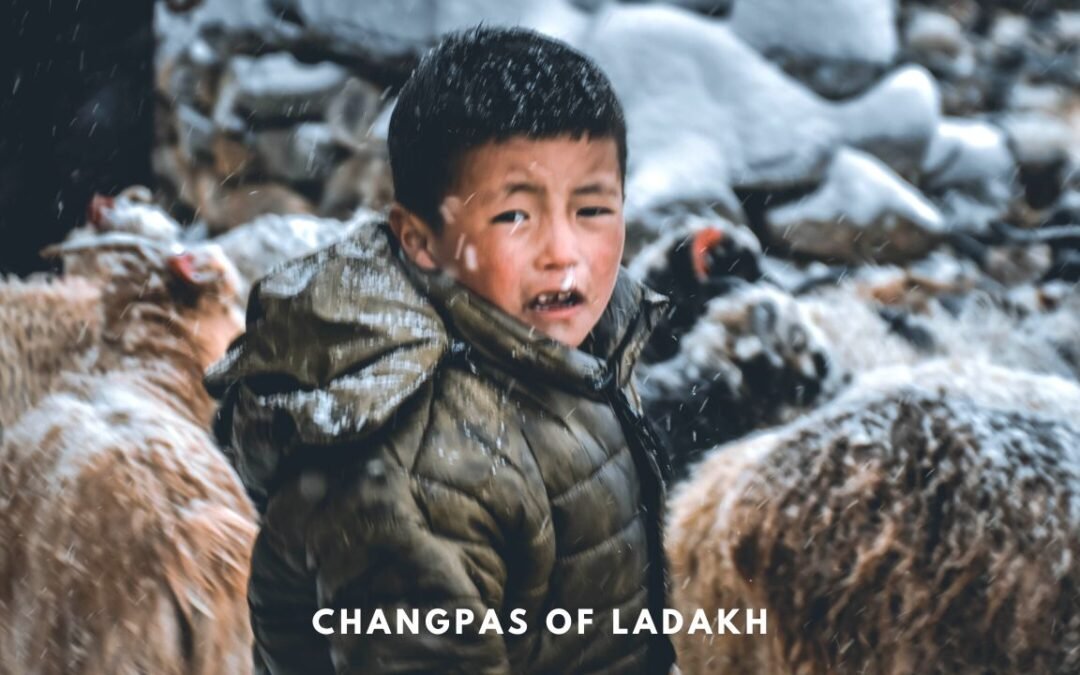


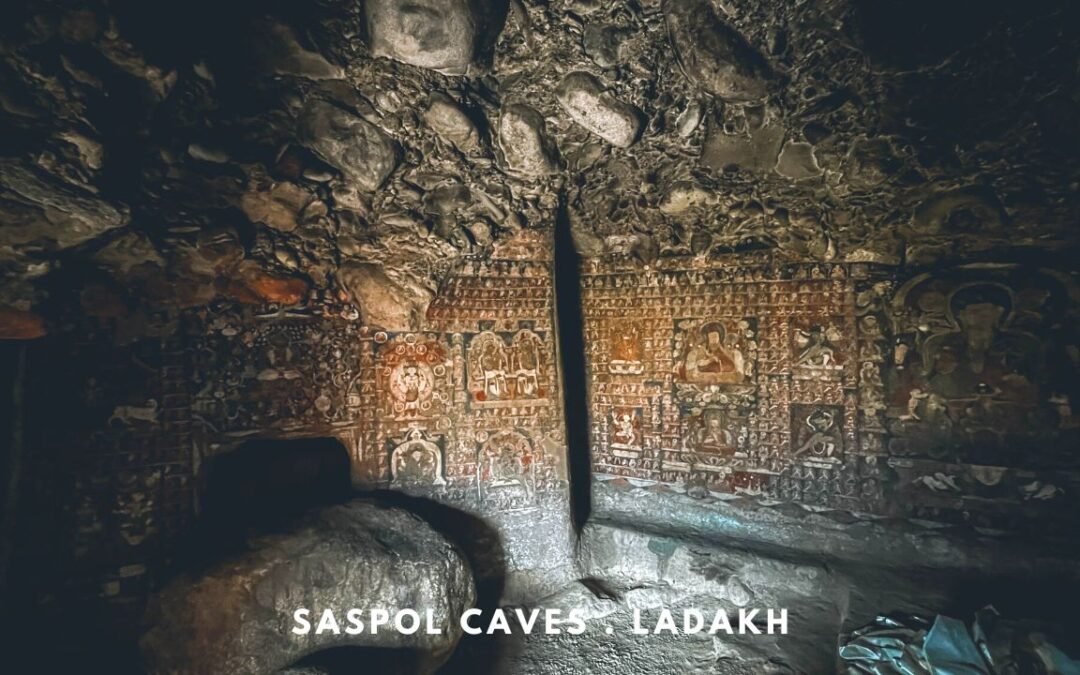

Hi,
I read your article,
Wonderful article, I’m inspire with your writing.
I’m From Rajasthan, I read your blog.
Your Content is very great.
Thank you!